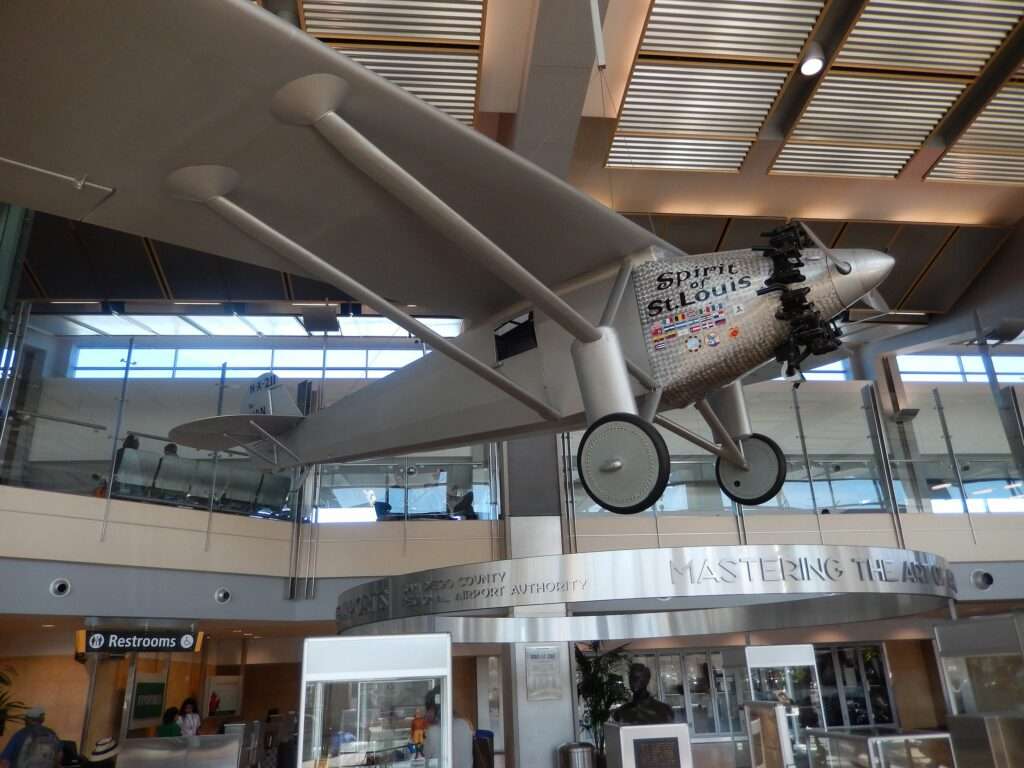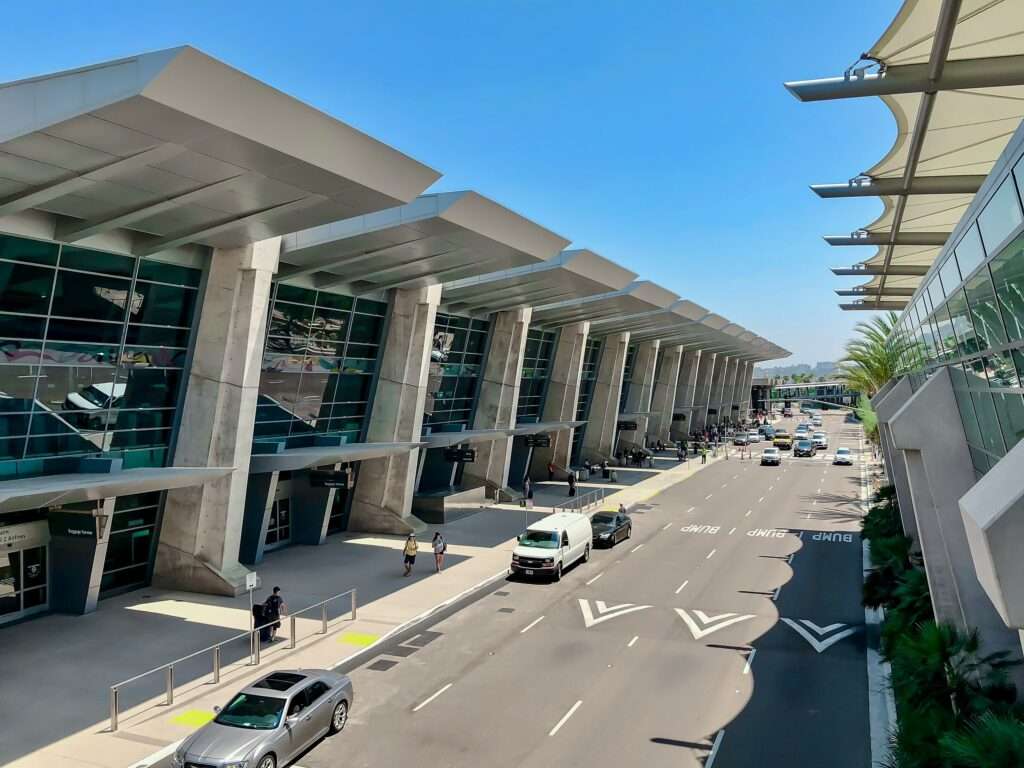San Diego International Airport (SAN), also known for most of its history as Lindbergh Field, boasts a rich past intertwined with aviation history and the development of San Diego as a major tourist destination.
Its story starts with a young aviator, a groundbreaking transatlantic flight, and a city eager to embrace the future.
Taking Flight: The Lindbergh Legacy (1927-1945)
Charles Lindbergh’s historic 1927 solo flight across the Atlantic Ocean from New York to Paris captured the world’s imagination.
The plane he used, the Spirit of St. Louis, was even built in San Diego.
Inspired by this feat and recognizing the potential of air travel, the city passed a bond issue in 1928 to construct a municipal airport.
With Lindbergh’s encouragement, the new facility, dedicated in 1928, was named San Diego Municipal Airport – Lindbergh Field.
Furthermore, this early airport was a marvel of its time.

Notably, it became the first federally certified airfield to accommodate all types of aircraft, including seaplanes, reflecting San Diego’s coastal location.
Regular airmail service to Los Angeles began in 1930, marking the dawn of commercial aviation at Lindbergh Field.
The 1930s witnessed further growth.
The airport achieved international status in 1934, and the United States Coast Guard established an air base adjacent to the field in 1937.
Moreover, World War II cemented San Diego’s role in aviation.
Consolidated Aircraft, a major defense contractor later known as Convair, had its headquarters bordering Lindbergh Field and produced numerous military aircraft there, contributing significantly to the war effort.
Post-War Boom: Expanding Horizons (1946-1970)
The post-war era brought a surge in passenger travel, and Lindbergh Field kept pace.
By 1957, five airlines, including national carriers like American and United, served the airport.
A new, modern terminal was constructed in 1967 under then-Governor Ronald Reagan, signifying the growing importance of commercial aviation.
The 1970s saw further expansion.
By this time, San Diego had become a popular tourist destination, and airlines added more flights and destinations, including non-stop services to major cities like Honolulu and Mexico City.
The airport boasted over 100 daily flights by the decade’s end.
A Gateway to the World: The Modern Era (1980s-Present)
The 1980s witnessed a boom in international travel, and San Diego International Airport benefited immensely.
New airlines, both domestic and international, saw the potential of “America’s Finest City” as a destination.
From there, the airport’s international connections flourished.
However, the airport also faced challenges.
Its single runway, a legacy of its early design, limited capacity.
Noise pollution from air traffic became a growing concern for nearby residents.
Recognizing these issues, the airport embarked on a series of modernization projects.
A significant turning point came in 2003.
The San Diego County Regional Airport Authority was established to manage the airport’s day-to-day operations and address long-term air transportation needs.
The same year, the airport’s name was officially changed to San Diego International Airport (SAN) to better reflect its role as a global hub.
Since then, SAN has continued to evolve.
New terminals have been built, focusing on passenger comfort and technological advancements.
Sustainability initiatives have been implemented to reduce the airport’s environmental footprint.
Additionally, the airport authority continues to explore options for increasing capacity, including potential runway extensions.
Today, San Diego International Airport remains a vital link for San Diego, serving millions of passengers annually.
It is a bustling hub for business and leisure travel, connecting the city to destinations worldwide.
As San Diego continues to grow and thrive, SAN looks forward to playing a vital role in its future, carrying the legacy of its rich history into the years to come.

Click the banner to subscribe to our weekly newsleter.

Click the photo to join our WhatsApp channel so then you can stay up to date with everything going on in the aviation industry!









